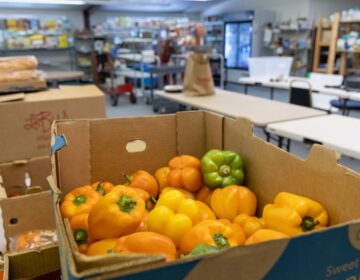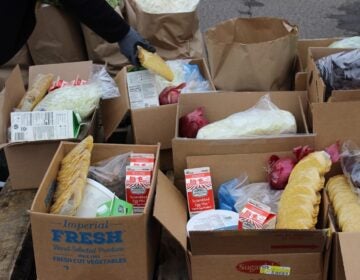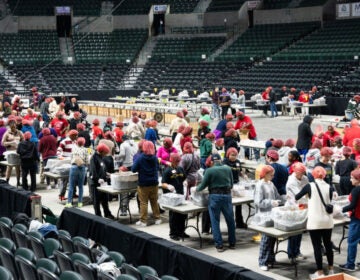Food banks in New Jersey need support. Here’s how you can help
As food prices have outpaced inflation, more people are turning to food banks in New Jersey. Some locations are experiencing greater demand than at the height of the pandemic.
Listen 1:08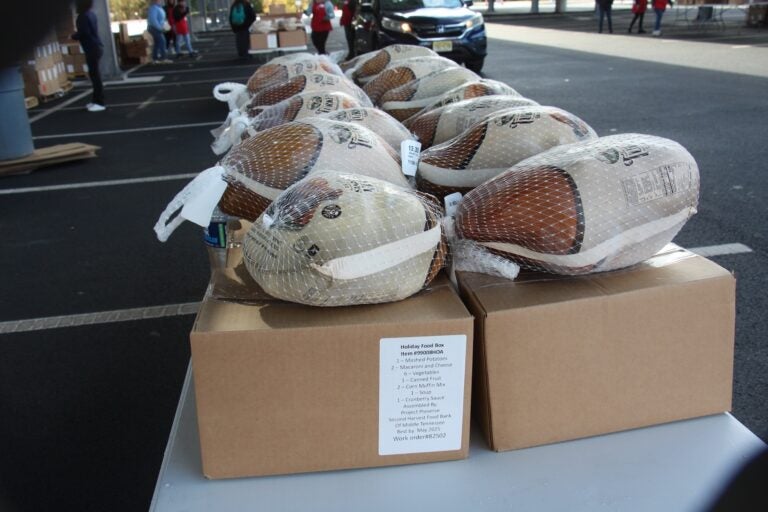
Turkeys ready for distribution at the Salvation Army’s Kroc Community Center in Camden on Nov. 23, 2024. During the event, 31,900 pounds of food, including 1,200 turkeys, were given away. (P. Kenneth Burns/WHYY)
From Philly and the Pa. suburbs to South Jersey and Delaware, what would you like WHYY News to cover? Let us know!
Food banks across the Garden State are struggling to keep up with rising demand that may soon outpace donations.
At the Salvation Army’s Kroc Community Center in Camden, requests for services have quadrupled since the height of the pandemic, according to a spokesperson. In November, the center gave out 31,900 pounds of food for Thanksgiving, compared to 30,000 pounds the previous year.
“The ripple effect of COVID, and then with inflation, prices, food prices, it’s really having a challenge for people to make ends meet,” said Fred Wasiak, president and CEO of Food Bank of South Jersey, which provided some of the food for the Kroc Center’s distribution.
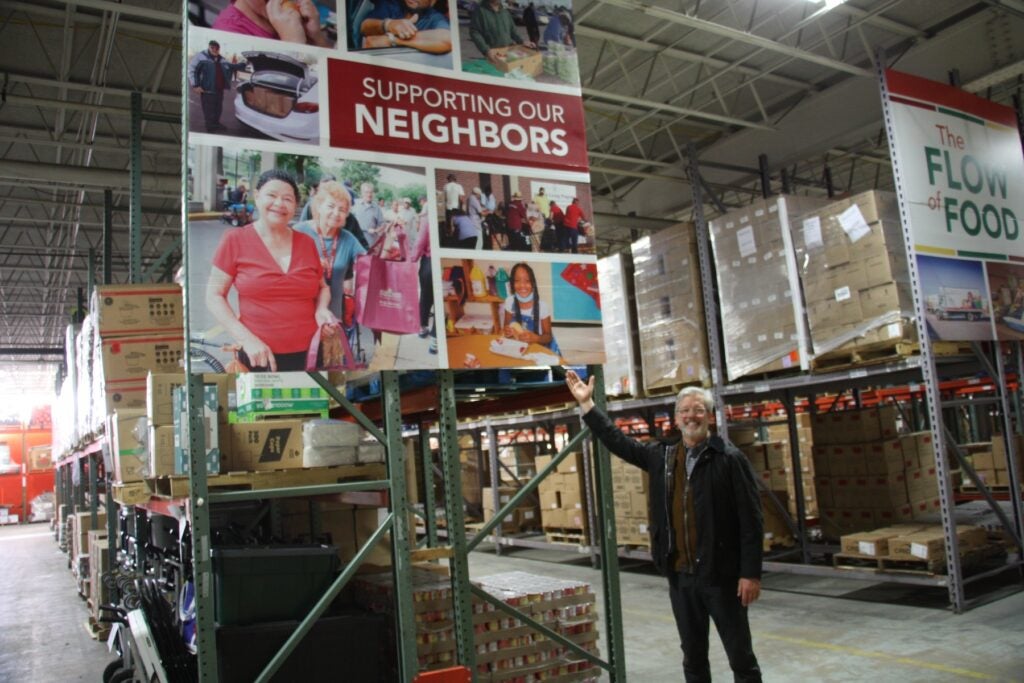
Wasiak’s organization served 95,000 people a month at the height of the pandemic. For the last 11 months, more than 170,000 people reached out for support, he said. And there are no signs of demands slowing down.
The trend is similar in other organizations.
This year, the Community Food Bank of New Jersey expects to distribute 110 million pounds of food, an increase of about 55% from pre-pandemic days. President and CEO Elizabeth McCarthy said it is unsustainable to continue distributing that amount of food based on the current levels of support.
“New Jersey is an incredibly generous state … but there is so much demand that we expect that we will have to cut back in the not-too-distant future,” she said.
Demands rise, but support dwindles
When millions turned to food banks during the height of the pandemic, funding and support kept pace with that demand.
However, the pandemic-era safety net programs have ended, and consumers are still seeing the effects of increasing food prices due to inflation.
“When families are spending almost $375 more a month on their budget, if they ‘net zero’ [before,] now they’re going to be in a hole $375, they have to go somewhere to have relief,” Wasiak said.
There is also concern that a second Trump administration will seek sweeping cuts to the Supplemental Nutrition Assistance Program, also known as SNAP, or food stamps.
McCarthy expects that the amount of food from the federal government “will probably go down again.”
“If we look at historical trends, we do have an administration coming in that we’ve experienced before,” she said. “We can look at what the food level was at that time, and it was lower.”
Though Trump and then-House Speaker Paul Ryan sought cuts to food stamp programs, they were largely left unscathed. The pandemic caused Congress to strengthen the programs. Policy experts predict cuts to food stamps under the new administration will be junked from any tax bill, especially if the legislation includes corporate tax cuts.
How can you help? Cash is best during the holiday season
Both Wasiak and McCarthy said monetary donations are the best way to support your local book bank, especially during the holiday season.
“For every dollar, it helps us purchase two meals because of our purchasing power that we have,” Wosiak said, adding that it also helps them intentionally seek nutritious and cultural food.
The Food Bank of South Jersey and the Community Food Bank of New Jersey list ways to help on their website.
McCarthy said she understands that people would like to do something “concrete” to help. Citing the upcoming gubernatorial election, she says residents can advocate for resources to combat food insecurity.
“I’m not suggesting who people should vote for, that’s up to them,” she said. “But if you’re someone who’s politically engaged, making sure your elected officials know that this matters.”
Apart from money, residents can also support in kind. Many food banks appreciate year-round volunteers. You can check with your local food bank about available volunteering slots. McCarthy said volunteer spots for her organization are booked through the end of the year.
“If people remember that we’re here year-round and come back in January, February, it’s definitely very helpful,” she said. “That’s kind of the time of year where people might not be thinking about it as much.”

Get daily updates from WHYY News!
WHYY is your source for fact-based, in-depth journalism and information. As a nonprofit organization, we rely on financial support from readers like you. Please give today.



